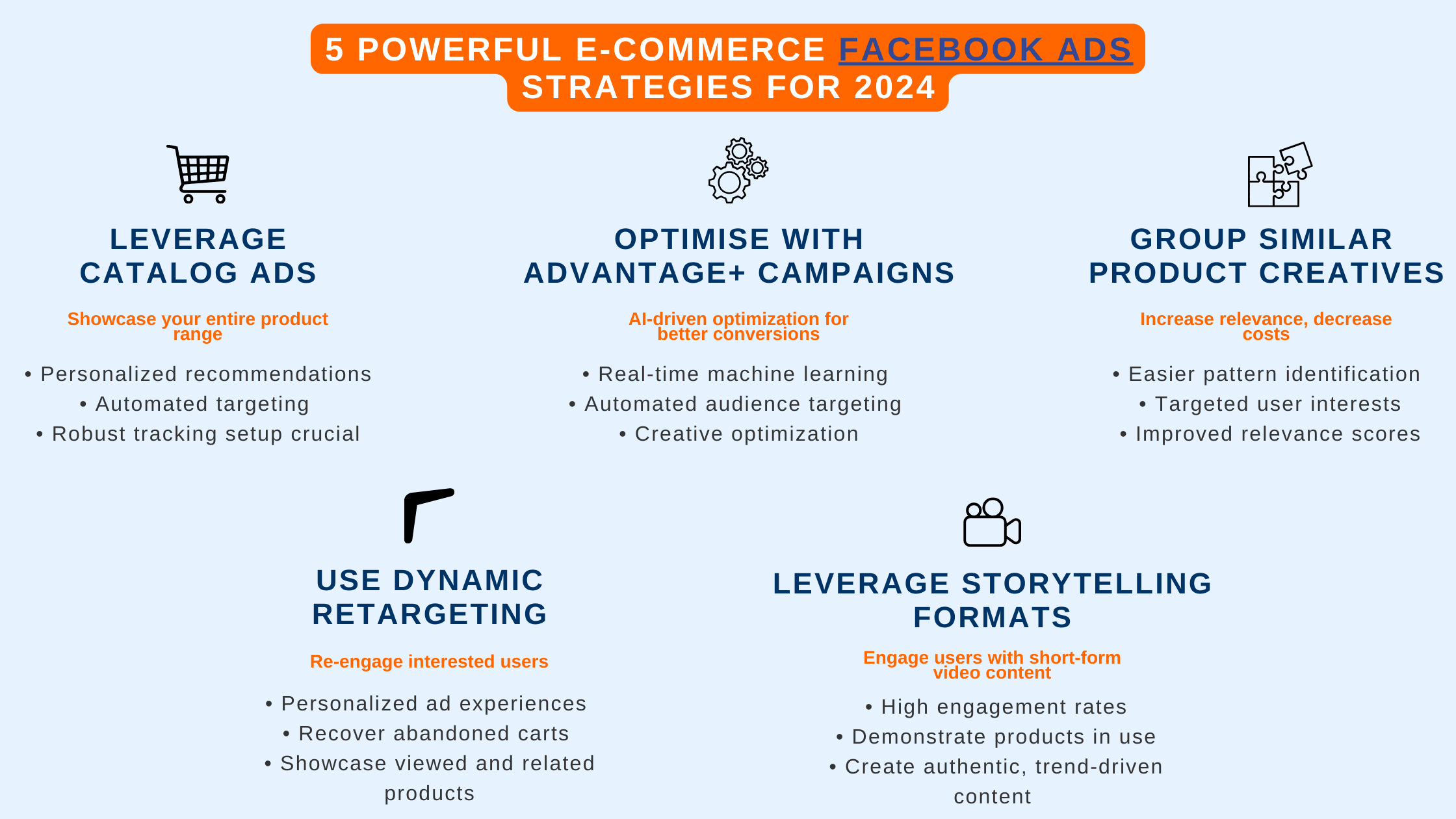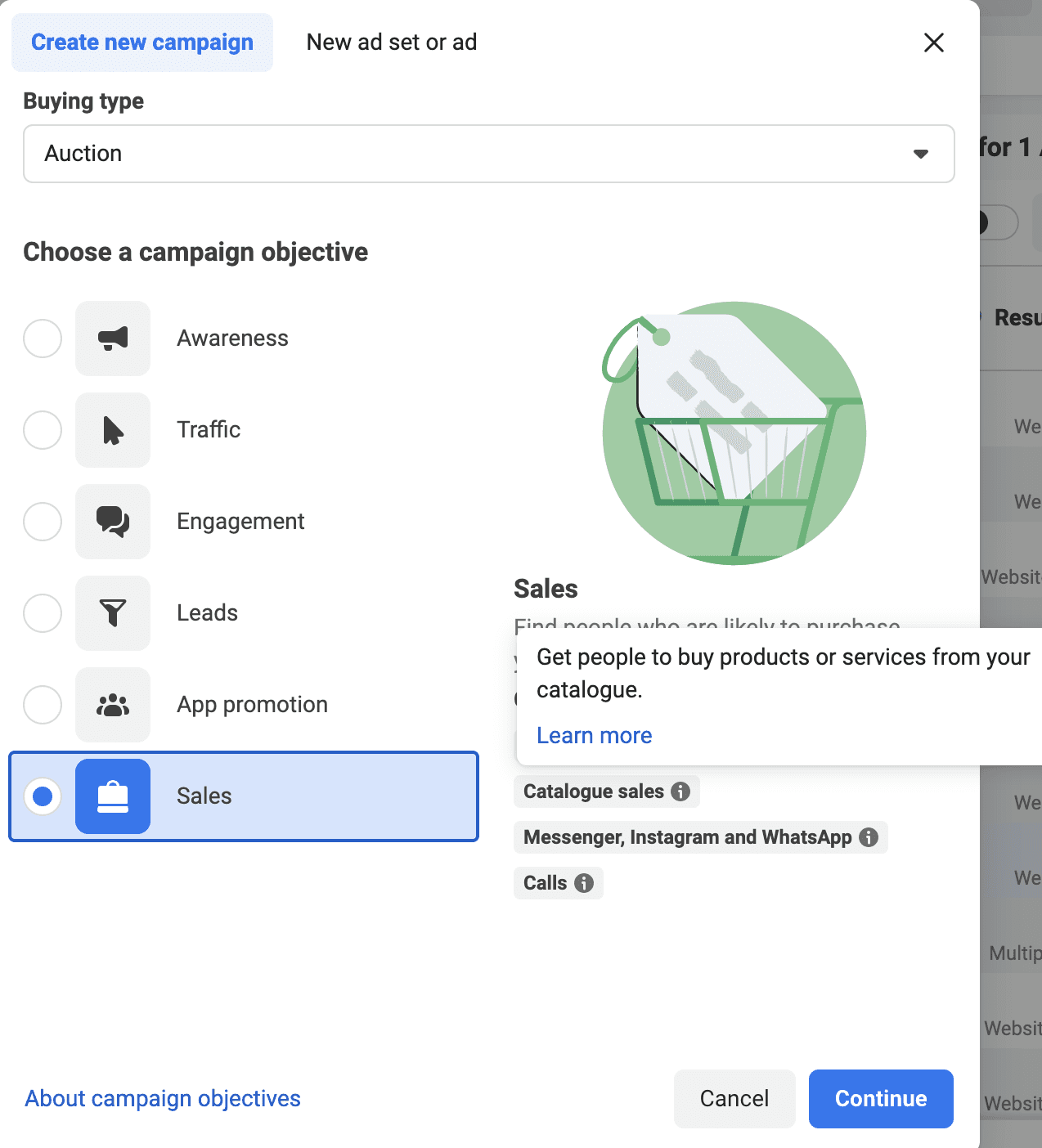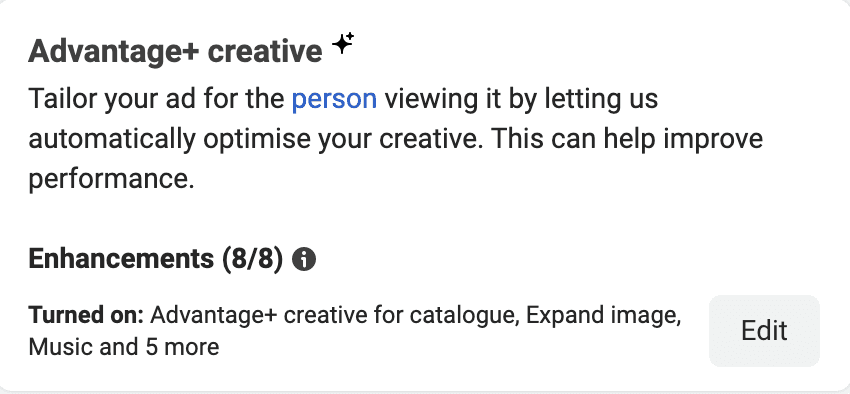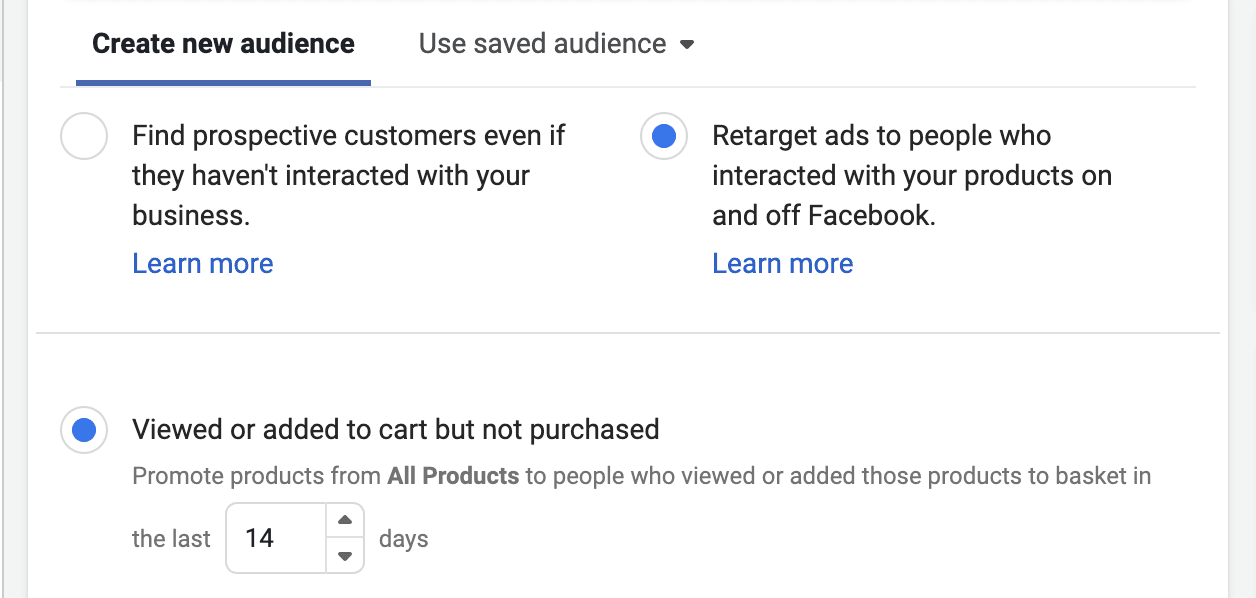5 Powerful E-commerce Facebook Ads Strategies for 2024
Boost your online sales with these 5 proven e-commerce Facebook ads strategies. Learn how to leverage Catalog Ads, AI-driven campaigns, and more for better ROI.
In the ever-evolving landscape of digital marketing, e-commerce businesses must stay ahead of the curve to maximize their return on investment. This article explores five powerful strategies to optimize your e-commerce Facebook ads, driving better results and increasing your brand visibility in 2024.

Leverage the Power of Catalog Ads for E-commerce Facebook Ads
Catalog Ads are an essential component of successful e-commerce Facebook ads strategies. This versatile campaign type allows businesses to showcase their entire product range, utilizing Facebook's sophisticated algorithm to match products with users most likely to purchase them.

Meta's ad platform uses smart algorithms to connect products with the right customers, which is essential for e-commerce Facebook ads. These algorithms dig into user data like browsing habits, past purchases, and how people interact with content. This helps them figure out who's most likely to be interested in specific products. When a business uploads their product catalog and sets up dynamic ads, Meta can then show tailored product suggestions to each user, making the ads more relevant and effective.
Content IDs are crucial to this matching process. Think of them as unique tags that link user behavior on your site, your product list, and your Facebook ads. For example, when someone looks at a product on your website, the content ID helps Meta recognize that specific item in your catalog. This allows Meta to show that product (or similar ones) in personalized ads to that user or to others who might like it.
You really can't overstate how important content IDs are for e-commerce Facebook ads. They allow for precise tracking of how users interact with specific products at every step, from first look to final purchase. This detailed tracking leads to more accurate retargeting, better ways to measure performance, and more effective creation of lookalike audiences. For e-commerce businesses, properly set up content IDs are essential to fully leverage Meta's advanced targeting and personalization features.
Key benefits of Catalog Ads for e-commerce Facebook ads include:
Personalized product recommendations for each user
Automated targeting based on user behavior and preferences
The ability to showcase your full product range or specific collections
While initially designed for larger businesses, Catalog Ads can be equally effective for smaller e-commerce stores. However, success heavily depends on having a robust tracking setup.
To implement Catalog Ads effectively:
Ensure your product catalog is up-to-date and well-organized
Implement the Facebook pixel on your website with precision (especially pay attention to content IDs (!))
Create a detailed product feed in Facebook Business Manager
Set up your Catalog Sales campaign in Ads Manager
Remember, the quality of your data directly impacts the performance of your e-commerce Facebook ads. Investing time in proper tracking setup will significantly enhance Facebook's ability to accurately target potential customers.
2. Optimize E-commerce Facebook Ads with AI-Driven Advantage+ Campaigns
Advantage+ campaigns represent the cutting edge of Facebook's AI-powered advertising solutions for e-commerce. These campaigns are specifically designed to drive conversions, making them ideal for e-commerce businesses focused on generating sales through Facebook ads.

What sets Advantage+ campaigns apart for e-commerce Facebook ads:
Real-time optimization using machine learning
Automated audience targeting and ad placement
Creative optimization to deliver the best-performing ad variations

Compared to traditional Facebook campaigns, Advantage+ significantly reduces manual work in e-commerce Facebook ads management.
To set up an Advantage+ campaign:
Select the Conversions objective in Ads Manager
Choose Advantage+ as your campaign type
Set your desired conversion event (typically "Purchase" for e-commerce)
Provide a variety of ad creatives for the AI to test and optimize
Set your budget and campaign duration
It's important to note that Advantage+ campaigns may require time to reach optimal performance. The AI continually learns and improves, so patience and consistent monitoring are key to achieving the best results with your e-commerce Facebook ads.
3. Boost E-commerce Facebook Ads Relevance by Grouping Similar Product Creatives
A strategic approach to organizing your ad creatives can significantly improve your e-commerce Facebook ads performance. By grouping creatives for similar products or product categories within the same ad set, you can increase ad relevance and potentially decrease costs.
For example, let's say you run an online sports equipment store. Instead of having one general ad set for all products, you might create the following groups:
Ad Set 1: Tennis equipment (rackets, balls, shoes)
Ad Set 2: Soccer gear (cleats, balls, shin guards)
Ad Set 3: Fitness accessories (yoga mats, resistance bands, weights)
Each of these ad sets would have creatives specifically designed to appeal to enthusiasts of that particular sport or activity. The tennis ad set might feature images of tennis courts and professional players, while the fitness accessories ad set could show people working out at home.
By organizing your ad creatives this way, you're more likely to show relevant products to interested users, improving engagement rates and potentially lowering your cost per click or cost per acquisition. This approach allows Facebook's algorithm to more easily identify and reach users who are most likely to be interested in specific product categories, leading to more efficient ad spend and better overall performance of your e-commerce Facebook ads.
This strategy works by:
Allowing Facebook's algorithm to identify patterns more easily
Enabling more effective targeting of users interested in specific product types
Improving relevance scores, which can lead to lower costs per click
To implement this strategy in your e-commerce Facebook ads:
Analyze your products and product categories to identify logical groupings
Create separate ad sets for each product group
Develop creatives that highlight the unique benefits of each group
Utilize detailed targeting options aligned with each product category (Lookalike audience who bought specific products, interest targeting, value-based lookalikes, etc)
By grouping related products, you can create more targeted and relevant e-commerce Facebook ads. This approach allows you to speak directly to the interests of specific customer segments, potentially improving engagement rates and conversion rates while reducing advertising costs.
4. Enhance E-commerce Facebook Ads with Dynamic Retargeting
Dynamic retargeting is a powerful technique for re-engaging users who have shown interest in your products but haven't made a purchase. This strategy involves showing e-commerce Facebook ads featuring specific products that users have previously viewed on your website or app.

Benefits of dynamic retargeting for e-commerce Facebook ads include:
Reminding customers of products they've already expressed interest in
Delivering highly personalized ad experiences
Potentially recovering abandoned carts and boosting sales
Let's say you run an online electronics store. A user visits your site and spends time looking at a specific laptop model but doesn't make a purchase. With dynamic retargeting: The user is added to a custom audience of "laptop viewers." You create a dynamic retargeting campaign for this audience. The user sees personalized Facebook ads featuring that exact laptop model, perhaps with a carousel showing related accessories. If they don't engage, you might show them ads for similar laptop models or create a special offer for that specific product. By implementing dynamic retargeting in your e-commerce Facebook ads strategy, you're not just reminding users of products they liked – you're creating personalized shopping experiences that can significantly boost your conversion rates and overall e-commerce performance.
To set up dynamic retargeting for your e-commerce Facebook ads:
Set up and maintain your product catalog in Facebook Business Manager
Create a dynamic retargeting campaign in Ads Manager
Define your audience based on specific user actions (e.g., product views, add-to-cart)
Design ad templates that will dynamically populate with relevant product information
For optimal results, consider showcasing not only the exact products viewed but also related items or complementary products in your e-commerce Facebook ads. Additionally, experiment with offering special incentives, such as limited-time discounts or free shipping, to encourage conversions.
5. Leverage Storytelling Through Reel Ads in Your E-commerce Facebook Ads Strategy
Reel ads represent one of the most engaging ad formats currently available for e-commerce Facebook ads. These short, vertical video ads offer a unique opportunity to showcase your products in a format that feels native to the platform.
To create effective Reel ads for e-commerce, focus on quick, attention-grabbing hooks and visual storytelling. Show your products in use, incorporate trending music or challenges when relevant, and use on-screen text to convey key messages. Leverage e-commerce-specific strategies like product tutorials, before-and-after demonstrations, or unboxing experiences. Include clear calls-to-action and take advantage of shopping integration features, such as product tags, to create a seamless path to purchase.By incorporating Reel ads into your e-commerce Facebook advertising strategy, you're aligning with current user behavior and preferences. This format can help overcome ad fatigue, potentially leading to higher engagement and conversion rates for your products. Remember to monitor key metrics like view duration, engagement rate, and click-through rate to optimize your Reel ad performance over time.

Advantages of using Reel ads for e-commerce Facebook ads include:
High engagement rates due to the popularity of the format
The ability to demonstrate products in use or in context
Opportunities to connect with customers on a more personal level
When creating Reel ads for your e-commerce Facebook ads:
Aim for an authentic feel that blends with user-generated content
Utilize trending sounds or music to increase engagement (ensure you have rights to use the audio)
Showcase your products in action, highlighting key features in an engaging way
Keep your Reels concise – aim for 15 seconds or less
Include a clear call-to-action to drive conversions
The key to successful Reel ads in your e-commerce Facebook ads strategy is to create content that feels natural within users' feeds. Focus on storytelling – show how your product solves a problem, enhances the user's life, or brings joy. This approach can help your ads resonate more deeply with potential customers, potentially leading to higher engagement and conversion rates.
By implementing these five strategies, you can significantly enhance the performance of your e-commerce Facebook ads. Remember, successful e-commerce Facebook ads require ongoing testing and optimization. Regularly analyze your campaign performance, be willing to experiment with new approaches, and let data guide your decision-making process.
FAQs About E-commerce Facebook Ads
Q: What are the best types of e-commerce Facebook ads for beginners?
A: For beginners, starting with simple photo ads or carousel ads can be effective. As you gain experience, you can move on to more advanced formats like Catalog Ads or Dynamic Ads.
Q: Do e-commerce Facebook ads work for small businesses?
A: Yes they absolutely do! Read more about how to start with Facebook ads even on a $3 budget from our latest blog post.Q: How much should I budget for e-commerce Facebook ads?
A: Your budget will depend on your business size and goals. You can start with a modest budget of $5-10 per day, and gradually increase as you see results and learn what works best for your products.
Q: How can I measure the success of my e-commerce Facebook ads?
A: Key metrics to track include Return on Ad Spend (ROAS), Click-Through Rate (CTR), Conversion Rate, and Cost Per Acquisition (CPA). Use Facebook Ads Manager to monitor these metrics.Q: How often should I update my e-commerce Facebook ads?
A: Regularly refreshing your ad creative can prevent ad fatigue. Try to update your ads every few weeks, or sooner if you notice a decline in performance.Q: Can I use e-commerce Facebook ads to target multiple countries?
A: Yes, Facebook allows you to target users in different countries. However, consider factors like shipping costs, language barriers, and cultural differences when expanding internationally.


